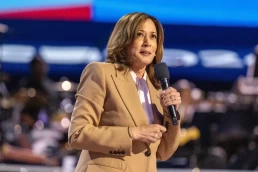Occupy Wall Street Anniversary Compilation
Today is the 10th anniversary of Occupy Wall Street, an intense explosion of popular resistance that was part of a global uprising kicked off by the Arab Spring. Many excellent pieces have come out in recent days; we’re giving you some of the highlights.
How Occupy Wall Street Reshaped America, by Michael Levitin
Rewriting the protest playbook, Occupy introduced a decentralized form of movement organizing that enabled hundreds of city chapters to reinforce and strengthen one another yet remain independent—a sharp break from the traditional, hierarchical structure of protest movements of the past. Pioneering the use of live-stream technology while employing powerful social-media messaging and meme tactics to grow participation both on- and offline, Occupy showed a new generation how to turn social movements into a viral spectacle that seizes control of the public narrative.
Happy Birthday, Occupy Wall Street, by Jonathan Smucker
But if Occupy Wall Street was only about the few thousand people who actively occupied Zuccotti Park, we wouldn’t still be talking about it today. Occupy Wall Street rang in a new common sense about how our economy and political system had been rigged by the few against the many. For three decades prior, it was as if some curse had prevented any mention of class — unless it was “middle class,” said by politicians on repeat. The wealth would trickle down, we were told. The American Dream, the idea that if you worked hard enough you could get ahead, was supposedly achievable by anyone. If you suggested otherwise, you were waging “class warfare” and probably a communist. There was, in the words of Margaret Thatcher, no alternative to unfettered capitalism. (Democrats seemed to agree!)
But three years after the financial meltdown in 2008, it was clear we needed an alternative. The political leadership of both parties had failed to hold anyone meaningfully accountable for what happened. “Banks got bailed out,” as Occupy’s chant went, to the tune of hundreds of billions of dollars, and “we got sold out” with no relief provided to struggling homeowners or other working people who lost their savings overnight.
With Occupy, finally someone was saying “enough.” Like all social movements, it was an indicator of widespread strain and popular grievances. That’s why its language of the “99 percent versus the 1 percent” is still very much part of the popular vernacular, and Occupy’s critique of the consolidation of wealth and political power in our society has been a lens through which millions have interpreted the events of the past decade. Maybe the Occupiers looked a little strange, but at least someone was standing up to the fuckers at the top.
Did Occupy Wall Street Make a Difference? By Ruth Milkman, Stephanie Luce and Penny Lewis
Occupy famously aimed to create inclusive horizontal structures that maximized participation and democracy, yet it soon was plagued by “the tyranny of structurelessness,” in Jo Freeman’s unforgettable phrase from the 1960s. As the movement mushroomed, meetings of the General Assembly were increasingly dominated by white and male voices and got bogged down in speechifying, rendering decision-making nearly impossible. The participants came from a wide variety of backgrounds and political orientations, which led to clashes. Meetings were also vulnerable to disruption and infiltration: As protest consultant Lisa Fithian told us, “You can’t keep the police out of an open movement space.”
How Occupy Wall Street Led to Bernie Sanders, by Jay Ponti/Julianna Forlano
Julianna welcomes author and organizer Jay Ponti about the 10 year anniversary of Occupy Wall Street! Jay, founder of Be The Revolution was on the ground during the Occupy’s encampment period and is behind many successful actions. His book, The Political Revolutionary’s Handbook, not only gives an in inside look into the organizing that launched that movement, but makes the case that The Occupy Wall Street network is directly responsible for the political rise and presidential bids of Senator Bernie Sanders.
How Occupy Wall Street spawned a decade of protest, politics, and social media, by Sean Captain
Police cleared Zuccotti Park in the wee hours of November 15 and evicted many other occupations in the days before and weeks after, although some persisted for several more months. And the movement had a brief renewal with a march on May Day 2012. But within less than a year, Occupy Wall Street went from a media sensation to a distant memory.
Yet the kernel of Occupy remains in the way Americans talk about economic inequality. Occupy also fired up activists who went off to a variety of movements on the left, including the Bernie Sanders presidential campaigns, Black Lives Matter, the fight for a living wage, and climate-change activism. It also helped pioneer the use of social media as a medium for protest with reach far beyond that of any in-person event.
In short, even though Occupy didn’t last long, its lasting influence is all around us.
Recent Posts
U.S. Realizes It Can Seize Boats After All
December 11, 2025
Take Action Now After months of extrajudicial killings in the waters off Venezuela, the Trump administration opted instead to capture an oil tanker.……
Wrong voters, wrong message: progressives’ autopsy lays bare Kamala Harris failures
December 10, 2025
Take Action Now RootsAction report finds Harris courted moderates instead of working-class Democrats – and Gaza stance did not helpBy David Smith,…
Senate GOP Healthcare Plan Decried as ‘Utter Joke’ That Would Devastate Sick Americans
December 10, 2025
Take Action Now One campaigner said Republicans want to force people “onto junk plans that leave them at risk of crippling medical debt.”By Jake…
We Need To Know How Corporate Democrats Made President Trump Possible
December 9, 2025
Take Action Now Saving the country from autocracy requires recognizing and overcoming the chokehold that Democratic leaders have on the party.By…




